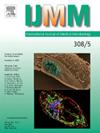Validation of ML-algorithms for the prediction of positive urine cultures from flow cytometry routine data in patients with suspected bacteriuria
IF 3.6
3区 医学
Q1 MICROBIOLOGY
引用次数: 0
Abstract
Urine samples are frequently analyzed in microbiology laboratories, but a large proportion of them are culture-negative. The aim of this study was to test whether positive urine cultures can be predicted from routine flow cytometric data. Urine samples (n = 1325) were used for a train dataset (n = 1032) and three independent test datasets (n = 93–100 samples) that were collected three months apart. Predictors from flow cytometry were total counts per µl of bacteria, erythrocytes, yeast-like cells, hyaline casts, crystals, leukocytes, squamous epithelial cells, non-hyaline casts and non-squamous epithelial cells in addition to age, sex and type of urine sample. Labels were positive culture and detection of clinically relevant uropathogens. Three classifiers (decision tree, random forest classifier, CatBoost) were 5-fold cross-validated on the train dataset to select an optimized model with ≥ 95 % sensitivity. The optimized model was trained on the complete train dataset and evaluated on the three independent test sets. In total, 72.5 % (960/1325) samples were culture positive with a predominance of Escherichia coli (n = 295). CatBoost outperformed the other classifiers in terms of balanced accuracy (train data) and was selected as the classifier for predictions. With optimised hyperparameters, the balanced accuracy was 62–74 % for the prediction of a positive culture (test data) and had a sensitivity that was stable over a period of six months (94–96 %, negative predictive value [NPV]: 67–77 %, positive predictive value [PPV]: 78–81 %). For the prediction of uropathogens, the balanced accuracy was 57–63 % with a stable sensitivity (95–100 %, NPV: 83–100 %, PPV: 48–59 %). In conclusion, the ML algorithms showed high sensitivity for detecting positive urine cultures.
从疑似细菌尿患者的流式细胞术常规数据预测尿培养阳性的ml算法的验证
尿样经常在微生物实验室进行分析,但其中很大一部分是培养阴性。本研究的目的是测试尿培养阳性是否可以从常规流式细胞术数据预测。尿液样本(n = 1325)用于训练数据集(n = 1032)和三个独立的测试数据集(n = 93-100个样本),这些数据集相隔三个月收集。流式细胞术的预测指标包括细菌、红细胞、酵母样细胞、透明样铸模、晶体、白细胞、鳞状上皮细胞、非透明样铸模和非鳞状上皮细胞的每µl总数,以及年龄、性别和尿样类型。标签阳性培养和临床相关尿路病原体检测。三种分类器(决策树,随机森林分类器,CatBoost)在训练数据集上进行5倍交叉验证,以选择灵敏度≥ 95 %的优化模型。优化后的模型在完整的训练数据集上进行训练,并在三个独立的测试集上进行评估。结果显示,72.5 %(960/1325)样品培养阳性,大肠杆菌为优势菌( = 295)。CatBoost在平衡精度(训练数据)方面优于其他分类器,并被选为预测的分类器。通过优化的超参数,预测阳性培养(测试数据)的平衡精度为62-74 %,并且在6个月内具有稳定的敏感性(94-96 %,阴性预测值[NPV]: 67-77 %,阳性预测值[PPV]: 78-81 %)。预测尿路病原菌的平衡准确度为57 ~ 63 %,灵敏度稳定(95 ~ 100 %,NPV: 83 ~ 100 %,PPV: 48 ~ 59 %)。总之,ML算法在检测尿培养阳性方面具有很高的灵敏度。
本文章由计算机程序翻译,如有差异,请以英文原文为准。
求助全文
约1分钟内获得全文
求助全文
来源期刊
CiteScore
9.70
自引率
0.00%
发文量
18
审稿时长
45 days
期刊介绍:
Pathogen genome sequencing projects have provided a wealth of data that need to be set in context to pathogenicity and the outcome of infections. In addition, the interplay between a pathogen and its host cell has become increasingly important to understand and interfere with diseases caused by microbial pathogens. IJMM meets these needs by focussing on genome and proteome analyses, studies dealing with the molecular mechanisms of pathogenicity and the evolution of pathogenic agents, the interactions between pathogens and host cells ("cellular microbiology"), and molecular epidemiology. To help the reader keeping up with the rapidly evolving new findings in the field of medical microbiology, IJMM publishes original articles, case studies and topical, state-of-the-art mini-reviews in a well balanced fashion. All articles are strictly peer-reviewed. Important topics are reinforced by 2 special issues per year dedicated to a particular theme. Finally, at irregular intervals, current opinions on recent or future developments in medical microbiology are presented in an editorial section.

 求助内容:
求助内容: 应助结果提醒方式:
应助结果提醒方式:


